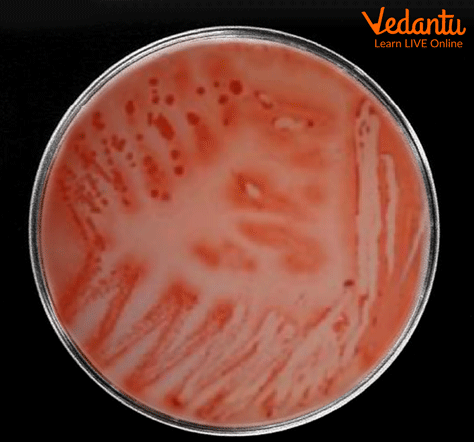Table Comparing Azotobacter and Azospirillum Functions and Importance
Azotobacter is a heterotrophic, naturally occurring, nitrogen-fixing bacterium that may be found in neutral or alkaline soil. Azotobacter chrococcum and Azotobacter beijerinckii are two of the genus' most significant species. These species assist plants in fixing nitrogen. Azotobacter and azospirillum both are bacteria that help in nitrogen fixation in plants. Azospirillum is a soil bacteria that grows in close proximity to the roots of tropical grasses. Azospirillum is a gram-negative motile bacterium found in monocot roots. It utilises expelled nutrients to promote plant development by nitrogen fixation from the atmosphere.
What are Azotobacter and Azospirillum?
Azotobacter
Azotobacter is capable of converting atmospheric nitrogen to ammonia, which is then absorbed and utilised by plants. Due to nitrogenase respiration protection, such bacteria are extremely resistant to oxygen during nitrogen fixation.
This organism has been found in the rhizospheres of a variety of crop plants, including rice, maize, sugarcane, bajra, vegetables, and plantation crops.
Seed inoculated with Azotobacter aids in the uptake of N, P, and micronutrients such as Fe and Zn in wheat; these strains have the potential to improve wheat nutrition.
Azospirillum
Azospirillum is an example of a facultative aerobic nitrogen fixer. Nitrogen is present in the atmosphere that is not directly consumed by the plants. Some prokaryotes such as bacteria help to fix this nitrogen for plants. Plant and living bacteria live in symbiosis association in which plants provide space to the organism and in return bacteria provide fixed nitrogen and nutrients to plants.
Azospirillum is an associative symbiotic nitrogen-fixing bacteria in the soil. These bacteria have an enzyme complex called nitrogenase complex that helps in nitrogen fixation. This is used in biofertilizers to increase the growth of the plant. Azospirillum lipoferum and azospirillum brasilense are two significant species.
Difference Between Azotobacter and Azospirillum
Azospirillum Images
Azospirillum is recognized for its white, solid and soft growth on medium containing Petri dishes.

Azospirillum spp

Azospirillum spp in Lab
Uses of Azotobacter and Azospirillum
Azotobacter is one of the best biofertilizer options for eco-friendly and sustainable crop production due to its ability to improve plant health through nitrogen fixation, growth hormone production, phosphate solubilization, plant disease management, and reclamation of better soil health.
Azospirillum is used as a biofertilizer due to its nitrogen-fixing characteristics. These bacterias help plants in the production of growth substances such as auxin, gibberellin and cytokinin. These are plant growth hormones. Azospirillum is utilised in vegetable crops by seed treatment, eye bud pasting and other methods.
Two Bacterial Examples of Biofertilizer
Bio-fertilizers (living fertilisers) are a combination of microorganisms capable of mobilising nutrients via biological processes. They supply plant nutrients via nitrogen fixation, phosphate solubilization, soil reactivity stability and soil quality enhancement.
Biofertilizers such as rhizobium, azotobacter, azospirillum, Azolla and blue-green algae are widely viable (BGA). Rhizobium, azotobacter, and azospirillum are bacterial examples of biofertilizers.
Conclusion
Azotobacter species are found everywhere in neutral and weakly basic soils, but not in acidic soils. Despite the cold climate, short growing season, and relatively low pH values of these soils, they can be found in Arctic and Antarctic soils. Azotobacter can survive in dry soils for up to 24 years as cysts. Azospirillum can promote plant growth through abiotic stress tolerance mechanisms known as induced systemic tolerance, which are mediated by antioxidants, osmotic adjustment, phytohormone production, and defence strategies such as pathogenesis-related gene expression. The above article is helpful to clarify the concept of azotobacter and azospirillum and the difference between these two bacteria.


FAQs on Azotobacter vs Azospirillum: Main Differences for Biology Students
1. What is the primary difference between Azotobacter and Azospirillum?
The main difference lies in their habitat and relationship with plants. Azotobacter is a free-living bacterium found in neutral or alkaline soils, fixing nitrogen independently. In contrast, Azospirillum is an associative symbiotic bacterium that lives in close proximity to the roots of grasses and non-leguminous plants, forming a mutually beneficial relationship without creating nodules.
2. How do Azotobacter and Azospirillum function as biofertilizers?
Both bacteria enhance soil fertility by converting atmospheric nitrogen (N₂) into ammonia (NH₃), a form usable by plants. This process, called biological nitrogen fixation, reduces the need for chemical fertilizers. They are cultured and applied to seeds or soil, where they colonize the root zone and supply the plant with fixed nitrogen, promoting healthier growth.
3. In what type of environments do Azotobacter and Azospirillum typically thrive?
Their ideal environments differ based on their metabolic needs:
- Azotobacter prefers neutral to alkaline soils and is an aerobic bacterium, meaning it requires oxygen. It can form protective cysts to survive in harsh conditions like dryness.
- Azospirillum is commonly found in the root zones (rhizosphere) of tropical grasses and cereals. It is a microaerophilic organism, thriving in low-oxygen environments close to the roots.
4. Why is Azotobacter's ability to fix nitrogen in aerobic conditions considered unique?
The enzyme responsible for nitrogen fixation, nitrogenase, is extremely sensitive to oxygen and gets inactivated in its presence. Azotobacter has a unique protective mechanism. It possesses a very high respiration rate that rapidly consumes oxygen at the cell surface, creating a low-oxygen environment internally. This protects the delicate nitrogenase enzyme, allowing it to fix nitrogen while living in oxygen-rich soil.
5. How does the relationship of Azospirillum differ from a true symbiotic bacterium like Rhizobium?
The key difference is in the level of integration with the host plant. Rhizobium forms a true symbiotic relationship by living inside specialized root structures called nodules on leguminous plants. In contrast, Azospirillum has an associative symbiotic relationship. It does not penetrate the root cells or form nodules; instead, it colonizes the surface of the roots (rhizosphere), benefiting from plant exudates and providing fixed nitrogen in return.
6. Are Azotobacter and Azospirillum classified as cyanobacteria?
No, this is a common misconception. Azotobacter and Azospirillum are true bacteria (eubacteria), specifically belonging to the group Proteobacteria. Cyanobacteria, formerly known as blue-green algae, are a different phylum of bacteria that are photosynthetic and can also fix nitrogen. While both groups contain nitrogen-fixers, they are taxonomically distinct.
7. What specific benefits, beyond nitrogen fixation, do these bacteria provide to plants?
Besides their primary role in nitrogen fixation, both bacteria promote plant growth by producing plant hormones (phytohormones). They can synthesize substances like auxins, gibberellins, and cytokinins. These hormones help in root development, cell division, and overall plant vigour. Some strains of Azotobacter can also help in phosphate solubilization, making phosphorus more available to the plant.
8. Can Azotobacter and Azospirillum be used for any crop? Explain the limitations.
While widely applicable, their effectiveness can be crop-specific and depends on soil conditions. Azotobacter is a broad-spectrum biofertilizer used for many non-leguminous crops, but its efficiency is significantly reduced in acidic soils. Azospirillum is most effective with specific cereal and grass crops like maize, sorghum, and sugarcane, as its association is strongest with the root systems of these particular plants. Therefore, the choice of biofertilizer must match the crop type and soil environment for best results.










